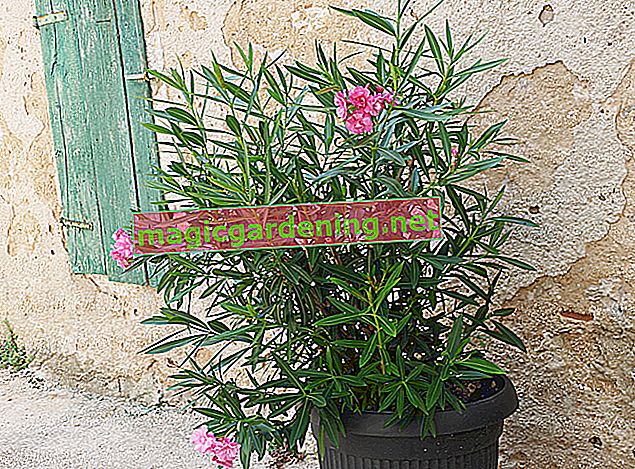
Seed propagation in oleander is an exciting matter
In contrast to the vegetative forms of propagation, in which you know exactly what the future plant will look like in advance - after all, it is only a clone of the mother plant - you can expect a lot of surprises with seed propagation. Seedlings often do not look like the parent plants at all and the descendants are very different from one another. This phenomenon occurs because the genetic material of the parent plants mixes with each other through the fertilization of the flowers, mutations can occur or suddenly previously suppressed features of ancestors further back could prevail.
also read
- Yellow oleander seeds are deadly poisonous
- Growing oleanders - extracting seeds from pods
- Houseleek - Propagated via daughter rosettes and seeds
Breeding new oleander varieties
For this reason, seedlings are preferred for breeding new oleander varieties. Even you as a hobby gardener can try your hand at it. All you need is at least two different types of oleander, which you pollinate by hand with a fine brush immediately after opening the flower buds. If seed pods develop from them, sow the seeds inside and cultivate the developing seedlings. However, you need a little patience for the cultivation, because the small plants bloom at the earliest at the age of three - only now can you see what shape and color the flowers have, so that you can make a selection.
Sow seeds and grow seedlings
The seed pods are ready to be harvested as soon as they have turned brown and gradually burst open. Collect the seeds inside and then proceed as described:
- First soak the seeds in lukewarm water for at least one night.
- Stratification is not necessary, as it is a Mediterranean plant.
- Fill a shallow seed tray with a nutrient-poor growing medium. (€ 9.05 at Amazon *)
- Herbal and potting soil is ideal, but a substrate based on coconut fibers is also very suitable.
- Sow the seeds on it and cover them only lightly with sieved soil.
- Oleander is one of the light germs.
- Spray the seeds and substrate with stale and lukewarm tap water.
- Keep the substrate evenly moist until germination.
- Cover the bowl with a piece of cling film or something similar to increase the humidity.
- Put the bowl in a light and warm place.
Now you have to be patient, because it can take a few weeks for germination. In principle, oleander seeds can be applied all year round, but the best results are achieved in spring.
Tips
In contrast to the propagation of cuttings, the typical oleander diseases such as the oleander cancer are not passed on to the newly emerging plants during seed propagation. For this reason, seedlings are particularly popular for grafting purposes (for example for tall oleander stems).








